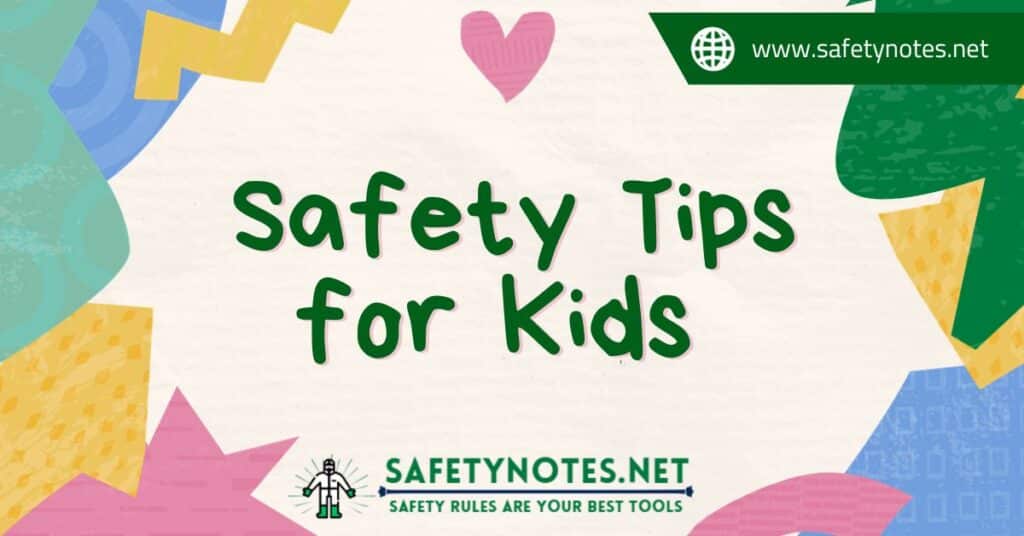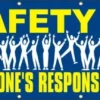
Children are curious, adventurous, and full of energy. They love to explore, learn, and play. However, this also means that they are exposed to various risks and hazards that can cause injuries and accidents. According to the World Health Organization, more than 800,000 children die each year from preventable injuries, such as falls, burns, drowning, poisoning, road traffic crashes, and violence. Therefore, it is important for parents, caregivers, teachers, and children themselves to be aware of the safety tips for kids that can help prevent or reduce the severity of these injuries.
In this article, we will cover some of the most common safety tips for kids at home and school, such as:.
- How to prevent falls
- How to prevent burns
- How to prevent drowning
- How to prevent poisoning
- How to prevent road traffic injuries
- How to prevent violence and bullying
Safety Tips for Kids \ Children:
How to Prevent Falls
Falls are the leading cause of injury-related death among children under 15 years old. Falls can happen anywhere, such as from stairs, windows, furniture, playground equipment, or bicycles. To prevent falls, you should:
- Install safety gates at the top and bottom of stairs and keep them closed at all times.
- Keep windows locked or use window guards or screens to prevent children from falling out.
- Keep furniture away from windows and balconies and do not let children climb on them.
- Use non-slip mats or rugs on slippery floors and stairs.
- Keep cords, wires, toys, and other objects out of the way to avoid tripping hazards.
- Supervise children when they are playing on high places, such as beds, sofas, tables, or chairs.
- Teach children how to use playground equipment safely and check for any broken or damaged parts.
- Make sure children wear helmets and protective gear when riding bicycles, scooters, skateboards, or rollerblades.
- Educate children about the dangers of falling and how to avoid them.
How to Prevent Burns
Burns are the second leading cause of injury-related death among children under 15 years old. Burns can be caused by fire, hot liquids, steam, electricity, chemicals, or radiation. To prevent burns, you should:
- Keep matches, lighters, candles, and other sources of fire out of reach of children.
- Install smoke alarms in every room and test them regularly.
- Have a fire escape plan and practice it with your family.
- Teach children how to stop, drop, and roll if their clothes catch fire.
- Keep hot liquids, such as coffee, tea, soup, or water away from children and use spill-proof cups or mugs.
- Turn pot handles inward on the stove and use back burners when possible.
- Keep electrical appliances unplugged when not in use and cover unused outlets with safety caps.
- Keep chemicals, such as bleach, detergent, or medicine locked up or out of reach of children.
- Avoid exposing children to direct sunlight for long periods and use sunscreen and protective clothing.
How to Prevent Drowning
Drowning is the third leading cause of injury-related death among children under 15 years old. Drowning can occur in pools, bathtubs, buckets, ponds, lakes, rivers, or oceans. To prevent drowning, you should:
- Never leave children alone near water, even if they can swim or are wearing flotation devices.
- Supervise children closely when they are in or around water and stay within arm’s reach.
- Install fences or barriers around pools and spas and keep them locked when not in use.
- Empty buckets, tubs, and containers after use and store them upside down.
- Teach children how to swim and float and enroll them in swimming lessons.
- Teach children how to recognize and avoid water hazards, such as currents, waves, or rip tides.
- Make sure children wear life jackets when boating, fishing, or playing near water.
- Educate children about the risks of drowning and how to prevent them.
How to Prevent Poisoning
Poisoning is the fourth leading cause of injury-related death among children under 15 years old. Poisoning can be caused by ingesting, inhaling, or touching harmful substances, such as drugs, alcohol, tobacco, cleaning products, pesticides, plants, or batteries. To prevent poisoning, you should:
- Keep medicines, vitamins, supplements, and other drugs locked up or out of reach of children.
- Follow the directions and dosage instructions on the labels and do not share or mix medicines.
- Dispose of unused or expired medicines safely and do not flush them down the toilet or sink.
- Keep cleaning products, pesticides, paints, solvents, and other chemicals in their original containers and store them away from food and drinks.
- Use child-resistant caps and lids on bottles and jars and do not transfer contents to other containers.
- Keep plants, mushrooms, berries, and seeds out of reach of children and teach them not to eat them.
- Keep batteries, magnets, coins, buttons, and other small objects away from children and teach them not to put them in their mouths.
- Install carbon monoxide detectors in your home and check them regularly.
- Call the poison control center at 1-800-222-1222 (toll-free Poison Help line) if you suspect poisoning or have any questions.
How to Prevent Road Traffic Injuries
Road traffic injuries are the fifth leading cause of injury-related death among children under 15 years old. Road traffic injuries can be caused by collisions, crashes, or accidents involving cars, buses, trucks, motorcycles, bicycles, pedestrians, or animals. To prevent road traffic injuries, you should:
- Always buckle up children in car seats, booster seats, or seat belts according to their age, weight, and height.
- Never leave children alone in a parked car or let them play near or around vehicles.
- Follow the traffic rules and signs and drive safely and defensively.
- Teach children how to cross the street safely and use crosswalks, sidewalks, and pedestrian signals.
- Make sure children wear helmets and reflective clothing when riding bicycles, scooters, skateboards, or rollerblades.
- Teach children how to ride bicycles safely and obey the traffic laws and signals.
- Keep children away from busy roads and highways and supervise them when they are near traffic.
- Educate children about the dangers of road traffic injuries and how to prevent them.
How to Prevent Violence and Bullying
Violence and bullying are the sixth leading cause of injury-related death among children under 15 years old. Violence and bullying can be physical, verbal, emotional, or cyber. Violence and bullying can occur at home, school, online, or in the community. To prevent violence and bullying, you should:
- Provide a safe and supportive environment for children at home and school.
- Teach children how to resolve conflicts peacefully and respectfully.
- Encourage children to express their feelings and emotions in healthy ways.
- Monitor children’s online activities and set rules and limits for their use of technology.
- Teach children how to protect themselves from cyberbullying and report any abusive or threatening messages or posts.
- Help children develop self-esteem and confidence and celebrate their achievements and strengths.
- Teach children how to recognize and avoid risky situations and peer pressure.
- Teach children how to seek help from trusted adults if they are victims or witnesses of violence or bullying.
- Educate children about the effects of violence and bullying on themselves and others.
Conclusion : Safety Tips for Children
In this article, we have covered some of the most common safety tips for kids at home and school. We have discussed how to prevent falls, burns, drowning, poisoning, road traffic injuries, and violence and bullying. We hope that this article has provided you with useful information and guidance on child safety. However, this article is not exhaustive and there may be other safety tips for kids that are relevant to your specific situation.


